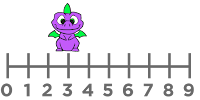Monday
Math 7 -- Game Planning -- Code.org / / Activity -- Functions, Contracts, Domains, and Range
Math 8 -- Game Planning -- Code.org / / Activity -- Functions, Contracts, Domains, and Range
Math 6 -- Game Planning -- Code.org / / Activity -- Functions, Contracts, Domains, and Range
English 7 -- Gallery tour -- present diorama, poster, or commercial
English 8 -- Gallery tour -- present diorama, poster, or commercial
LESSON OVERVIEW
Contracts provide a way for students to better understand
and discuss functions. Through this lesson, students will look at known
functions and come up with the contracts that describe those functions.
LESSON OBJECTIVES
Students will:
- Describe
a function in terms of its name, domain, and range.
- Create
contracts for arithmetic and image-producing functions.
Lesson Overview Slides
What's in a Contract
Activity: Contracts
\Wrap-up
ANCHOR STANDARD
Common Core Math Standards
- F.IF.1:
Understand that a function from one set (called the domain) to another set
(called the range) assigns to each element of the domain exactly one
element of the range. If f is a function and x is an element of its
domain, then f(x) denotes the output of f corresponding to the input x.
The graph of f is the graph of the equation y = f(x).
Tuesday
Math 7 -- Game Planning -- Code.org / / Activity -- Defining Variables and Substitution
Math 8 -- Game Planning -- Code.org / / Activity -- Defining Variables and Substitution
Math 6 -- Game Planning -- Code.org / / Activity -- Defining Variables and Substitution
English 7 -- Begin Rhythm & Flow -- Learn Garage Band -- Found Poem
English 8 -- Outsiders Movie -- compare and contrast to novel
Create a timeline of the major points of the movie and novel to compare
Timeline will serve as a tool for comparing and contrasting the movie and the novel as an essay
Rubric for Outsiders Media Comparison
Create a timeline of the major points of the movie and novel to compare
Timeline will serve as a tool for comparing and contrasting the movie and the novel as an essay
Rubric for Outsiders Media Comparison
Defining Variables and Substitution
LESSON OVERVIEW
In this activity, students will learn to define variables that can be used to reference values and expressions. Once defined, their variables can be used repeatedly throughout a program as substitutes for the original values or expressions.
LESSON OBJECTIVES
Students will:
- Define variables by giving them a name and assigning them a value or expression.
- Use variables within Evaluation Blocks.
- Describe a situation where using variables as substitutions for values or expressions is more efficient.
What's in a Contract
Vocabulary
- Define -
associate a descriptive name with a value
- Variable -
a container for a value or expression that can be used repeatedly
throughout a program
Activity Link
Common Core Math Standards
- 6.EE.4: Identify when two expressions are equivalent (i.e., when the two expressions name the same number regardless of which value is substituted into them). For example, the expressions y + y + y and 3y are equivalent because they name the same number regardless of which number y stands for.
Getting Started
Activity: Defining Variables and Substitution






